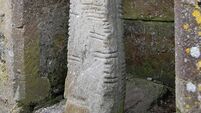Dispelling the myths about bats
A conservation group is working to dispel the legendary myths surrounding bats in a bid to help protect the future of the endangered species.
With vampire stories partly to blame for the poor public image of the nocturnal mammals, Bat Conservation Ireland is working to reassure homeowners who may find them in their attics.
With bats under threat due to a loss of roosting sites, Tina Aughney from Bat Conservation Ireland insisted the nesting creatures do no harm. The conservation officer urged people to ignore old myths about the nocturnal creatures.
“People often have tremendous fears of bats due to old myths but they are not blind, they don’t fly into people’s hair, they are not vampires and only eat insects,” she said.
“Once you break the myths people often are ok about it.”
She said: “It is just a lack of information more than anything else.”
The small flying mammals are now protected creatures in Ireland under European and Irish conservation law – with the west coast home to the largest population of the endangered species, the Lesser Horseshoe Bat.
Ms Aughney said that once the warmer weather comes during the spring and summer some of the 10 species of insect-eating bats found in Ireland turn to people’s attic spaces to roost.
“They are quite opportunistic so they are quite happy to go into attics,” she said, adding it was just for the summer breeding period.
“They are no harm – they don’t bring in nest material. They just find a gap, so they are often just in the felt area. They don’t go chewing up nest material. We just ask people to put up with them if they can.”
The conservationist, who can be contacted through the website www.batconservationireland.org, said most people do not realise the bats are even roosting in the attic space.
Ms Aughney said they are a protected species so once they breed in the house they are protected.
The conservation officer said the society provided people with as much information as possible on the creatures in a bid to dispel myths and make people more comfortable about bats.
Ms Aughney said the problems often arose as people did not know much about them and feared them due to their nocturnal habits.
“But they are more closely related to humans than mice, they are really harmless,” she said.













